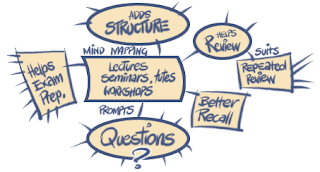An official update to the original "Shift Happens" video from Karl Fisch and Scott McLeod, this June 2007 update includes new and updated statistics, thought-provoking questions and a fresh design.
Monday
Living in Exponential Times! Must View
An official update to the original "Shift Happens" video from Karl Fisch and Scott McLeod, this June 2007 update includes new and updated statistics, thought-provoking questions and a fresh design.
Sunday
The Visual Argument and the Sensory Explosion in Learning
If you only heard about it...
If you only saw it in images in static form..
If you only touched it...
If you saw, heard, read, touched and sensed it...
Which would one empower you ...
The MindTool - Interactive Whiteboards and Why?
The interactive whiteboard is an excellent tool for the constructivist educator. Author David Johassen coined the word "mindtool" to describe devices or applications which encourage use of technology to encourage critical thinking in students. Attributes of mindtools include ease of use, group interaction, ready availability of software to be used. Since the boards can be used with any software, they are extremely adaptable for numerous uses and do not require acquisition of additional software. Their creative use is limited only by the imaginations of teachers and students.
The board can accommodate different learning styles. Tactile learners can benefit from touching and marking at the board, audio learners can have the class discussion, visual learners can see what is taking place as it develops at the board.
One-computer classrooms can maximize the use of limited computer access by using the whiteboard. Students can work together with individuals contributing at the board, other participants at the computer, and the group as a whole discussing the activity. While it is true that acquiring the board and the projector is an expense, the use of this set-up can be viewed as a cost-cutter when it makes it possible for one computer to serve multiple students.
Source : Dr. Mary Ann Bell
What are the benefits?
· Because interactive whiteboards are so like conventional whiteboards, they can help even technophobic teachers to use technology comfortably for presentations from the front of the room.
· They help in embedding the use of e-learning because they rapidly demonstrate the potential of alternative modes of delivery.
· They make it easy for teachers to enhance presentation content by easily integrating all kinds of material in a lesson: a picture from the internet, a graph from a spreadsheet and text from a Word file in addition to student and teacher annotations on these objects.
· They allow teachers to easily and rapidly create customized learning objects from a range of existing content and adapt it to the needs of the class in real time.
· They allow learners to absorb information more easily.
· They allow learners to participate in group discussions by freeing them from note taking.
· They allow learners to work collaboratively around a shared task/work area.
· When used for whole class interactive testing of understanding, they can provide learner feedback rapidly.
Source : TechLearn 'Interactive whiteboards in Education'
Active Learning Enhanced
Mind Mapping for Visual Clues to Thought and Idea Patterns

Mind maps are tools which help you think and learn.
How to do a Mind Map
Mind mapping (or concept mapping) involves writing down a central idea and thinking up new and related ideas which radiate out from the centre. By focusing on key ideas written down in your own words, and then looking for branches out and connections between the ideas, you are mapping knowledge in a manner which will help you understand and remember new information.
Look for relationshipsUse lines, colors, arrows, branches or some other way of showing connections between the ideas generated on your mind map. These relationships may be important in you understanding new information or in constructing a structured essay plan. By personalizing the map with your own symbols and designs you will be constructing visual and meaningful relationships between ideas which will assist in your recall and understanding.
Draw quickly on unlined paper without pausing, judging or editing
All of these things promote linear thinking and the idea of mind mapping is to think creatively and in a non-linear manner. There will be plenty of time for modifying the information later on but at this stage it is important to get every possibility into the mind map. Sometimes it is one of those obscure possibilities that may become the key to your knowledge of a topic.
Alternative approaches
One of the powerful things about mind mapping is that it is a tool which encourages creative thinking and often creative solutions to problems. Always look at alternative ways of approaching essay questions and always be prepared to be a critical researcher and writer who is prepared to go outside the normal boundaries!
Friday
Desire2Want
Thursday
The Education Revolution USA
Lev Vygotsky 'The' Papa of the Constructivist Theory
The QEP Reform is based on the 'Vygotskian' constructivism learning theory.






